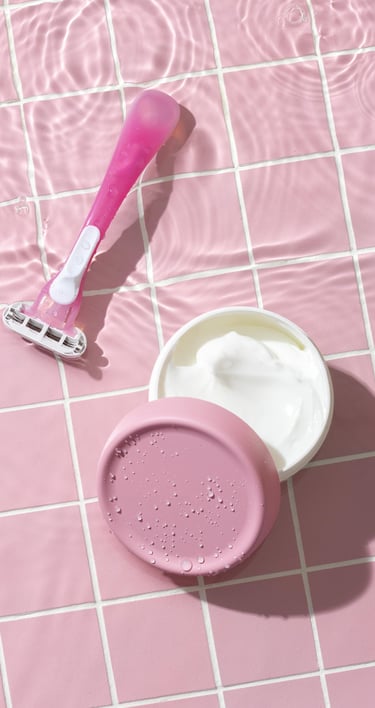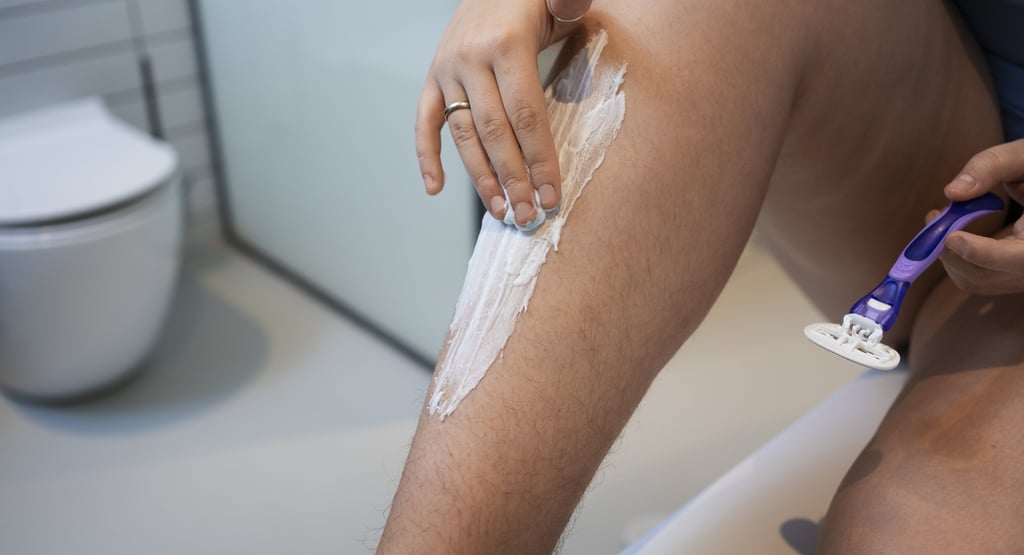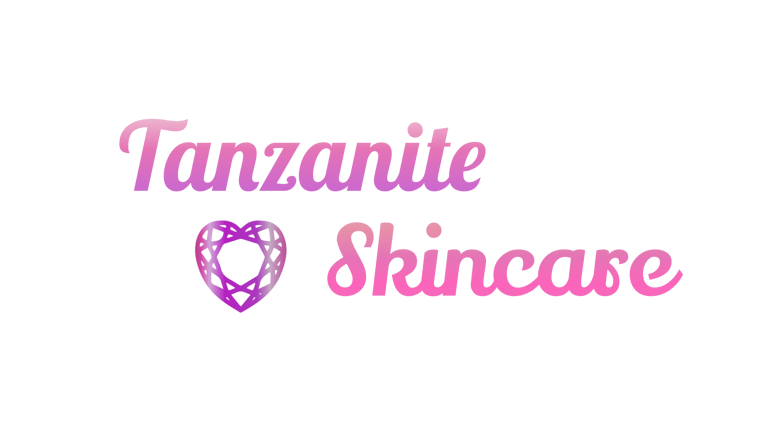DIY Homemade After Shave Cream for Soothing Skin
Discover how to make your own soothing after-shave cream at home. This DIY recipe helps calm skin irritation after shaving, waxing, or hair removal, ensuring your shaving skin care routine is effective and gentle.


As part of your personal care and grooming routine, it is something that you do maybe everyday, every other day, once per week or even month with a planned schedule or random, or due to how fast or slow your hair grows in certain part of your body. Shaving can have many benefits if done correctly
Benefits of Shaving
There are many significances and reasons as why one may choose to shave their hair especially that is considered undesirable. Some of the reasons might be
to enhance your skincare routine
get a fresh clean feel
improve hygiene and reduce chances of bacterial growth in that particular body part
avoiding clogging pores
improve your look or show off your face
The problem always arises after shaving. Many individuals lack the knowledge of about after care when you're done with shaving. Shaving can leave micro cuts, blunt stubs which can then later cause ingrowing hairs and razor bumps. But also shaving can exert pressure that can cause skin redness and itchiness.
In order to avoid these kind of issues it is always good idea to get a sharp razor that won't cause blunt stubs that can lead to ingrowing hairs. Let's make homemade after shave cream that can calm your skin after shaving with razor.
Selecting Ingredients
Distilled water: This is the main ingredient in this after-shave cream. One should not make a mistake to substitute distilled water to tap water, this is due to the fact that most of the time tap water or bottled drinking water may contain bacteria or mineral impurities that can ruin the final product, so its always wise to use distilled water.
Lavender hydrosol: This ingredient comes from distillate after extracting lavender essential oil. Lavender hydrosol or floral water has both calming and soothing properties that may help to heal skin from micro cuts and exfoliation caused by razor. It has anti-inflammatory properties that can prevent the skin from getting redness after shaving so it is part of this after-shave cream formulation.
Calendula flower extract: This is another ingredient that has anti-inflammatory and soothing properties. Calendula flower extract can help to calm and heal micro cuts from razor shaving, as part of your after-shave cream this botanical is great!
Cetyl alcohol: This fatty acid acts as your thickening and emulsifying agent to this after-shave cream recipe. It is used in smaller percentage that delivers big results. It is also safe and natural emulsifier that rarely causes skin allergies or reactions.
Aloe vera gel: It is an excellent humectant filled with anti-oxidants that can also protect, calm and sooth broken skin. Using it in your after-shave cream formulation will definitely improve the outcomes when using the product.
Triglycerides: This ingredient is derived from palm or coconut oil. It is a powerful emollient than can add protective layer on the skin barrier. As part of the after-shave cream formulation it can soothe and smoothen the skin. It can also repair the skin barrier.
Vegetable glycerin: Just like aloe vera gel, glycerin is another humectant with potential to soothe, soften and moisturize the skin. In this after-shave cream, it can play part as binder of other water-based ingredients together to make an emulsion.
Guar gum: It is a good thickening agent commonly incorporated in cosmetic formulations like after-shave cream. Guar gum is added in water-based ingredients in making the formulation. It makes the recipe more viscous and less runny, which is very important in making lotions and creams.
EDTA: This ingredient acts as a stabilizing agent of all the ingredients in the after-shave cream. It can also be a good chelating agent. It is usually used in small percentages and over the years there are numerous studies to support its efficacy and safety in use in cosmetic formulations.
Phenoxyethanol: It is a good preservative agent that is added to this formulation to prevent bacterial growth in the end product that can reduce its efficacy and shelf-life. It is generally considered safe and it is biodegradable.
Ingredients
5⅔ tablespoons of distilled water
1 teaspoon of lavender hydrosol
1 teaspoon of calendula flower extract
½ teaspoon of cetyl alcohol
½ teaspoon of aloe vera gel
¼ teaspoon of triglycerides
½ teaspoon of vegetable glycerin
¼ teaspoon of guar gum
¼ teaspoon of EDTA
⅛ teaspoon of phenoxyethanol
Gather your ingredients together in a your working bench or kitchen top. You might also need tools and utensils like measuring scale, kitchen thermometer, measuring spoons, measuring cups, stove top, hand-held mixer, mixing bowl and designated jar. Prepare for your stuff before making this recipe for faster making time.
Instructions
Measure out your ingredients; distilled water, guar gum, aloe vera gel and EDTA. Add all thing ingredients in a heat-resistant measuring cup and place it in a saucepan with few inches of water. This saucepan is going to act as a water bath.
Heat the saucepan with the mixture in a measuring cup, on a stove top on low heat till it reaches 140 Fahrenheit, check the temperature with a kitchen thermometer. Let all the ingredient mix and dissolve together completely.
Allow it to cool to room 100 Fahrenheit.
Meanwhile get another heat-resistant measuring cup and add cetyl alcohol, triglycerides and calendula flower extract. Do the step 1,2 and 3 with this measuring cup.
Take your two measuring cups and pour all their contents in a heatproof mixing bowl. These two measuring cups mixtures' should be at the same temperature Immerse your hand-held mixer and blend well till you get homogenous mixture.
Add vegetable glycerin, lavender hydrosol and phenoxyethanol to the mixture and continue to blend on low to medium speed till all these ingredients are well mixed.
Pour your formulation in a clean, well-sanitized jar or bottle and use after every shave within four months.
NOTE: This formulation contain no essential oils or fragrance oils since they could act as irritants to clean shaven area, so avoid these ingredients as much as possible.


How to Shave Properly and Avoid Razor Cuts
Prep the skin area you want to shave. Wet your skin to soften the skin.
Apply gentle shaving cream or gel on the skin area to be shaven. Johnson Baby Oil also is a good alternative too as it allows for the razor blade to glide easily on the skin.
Shave the hair in the direction on which it grows.
Rinse the razor with every glide you shave hair with and repeat the process till the area is clean shaven.
Rinse the shaven area and apply your after-shave cream to sooth the shaven area and avoid razor bumps.
Wash your razor and towel dry it and store the razor in a clean and dry place. Never use your razor more than twice and avoid sharing razors with anybody.
About me
Hello, my dear gorgeous! Welcome to my blog and learn with me as you walk in your skincare journey. I'm skincare enthusiast and a student. I like sharing my passion of beauty and skincare with the world. I like blogging, reading and binge watching YouTube vlogs and Netflix during my leisure time.


